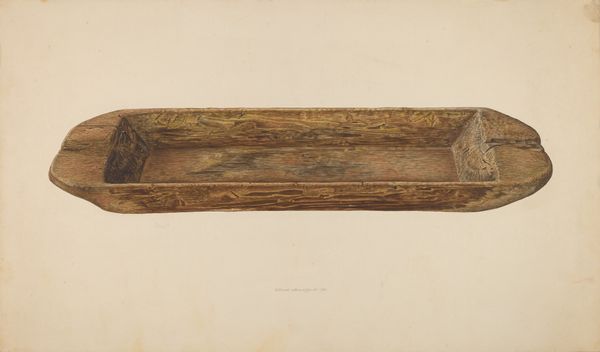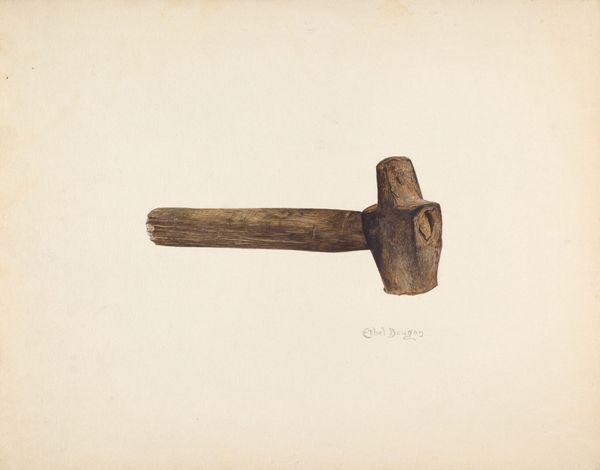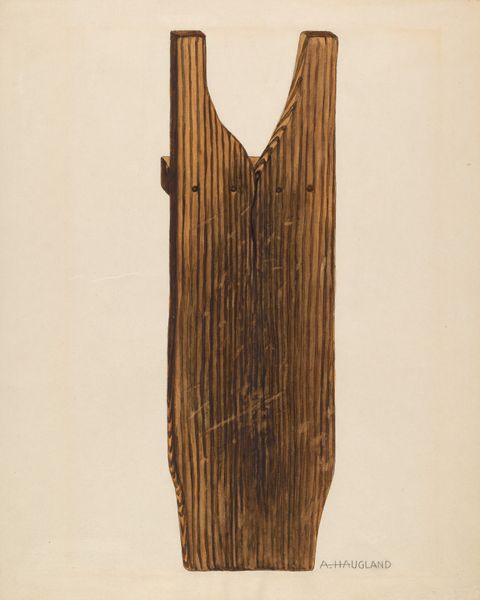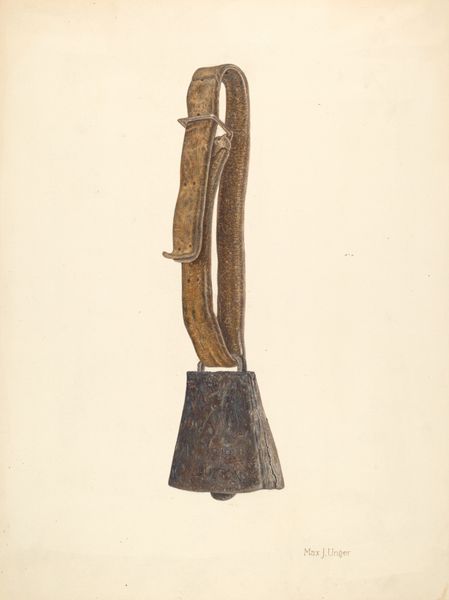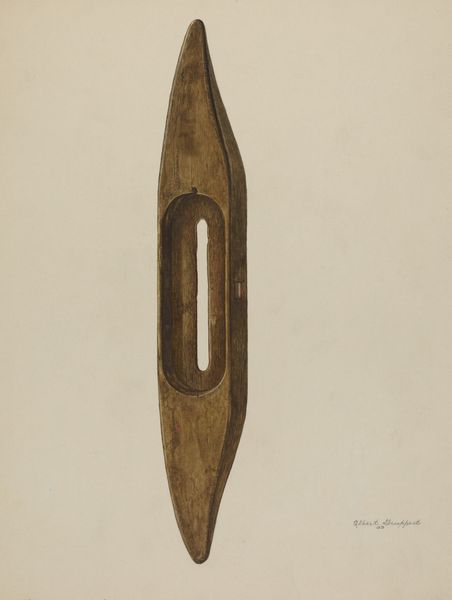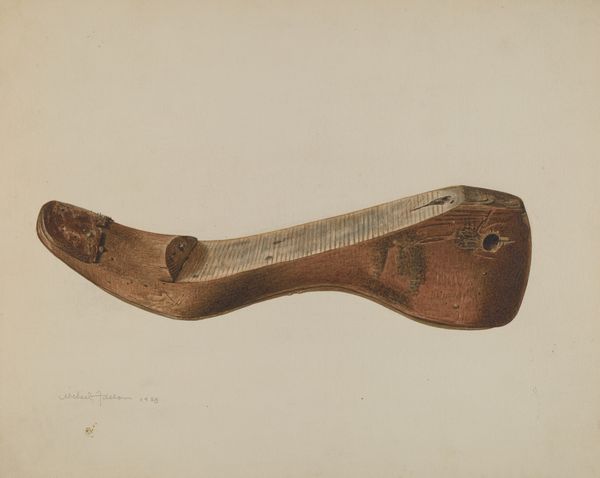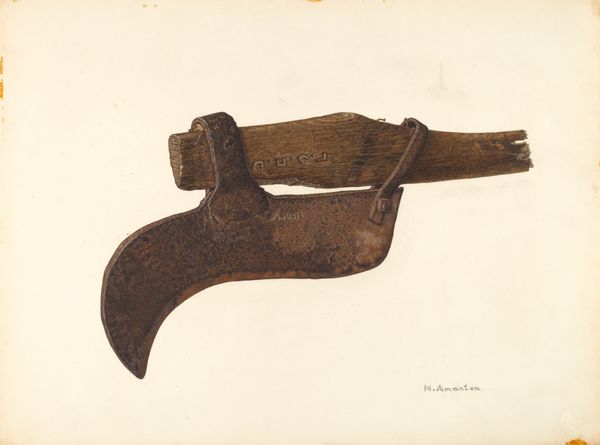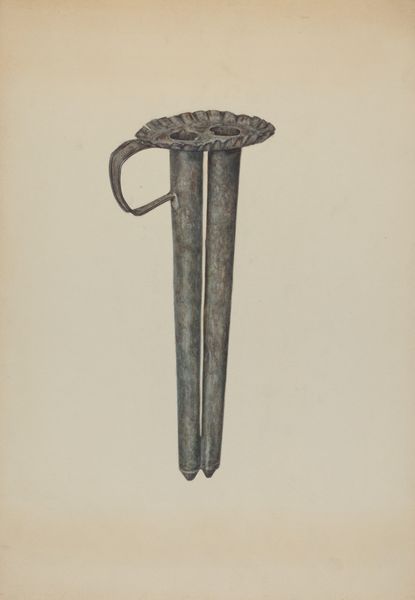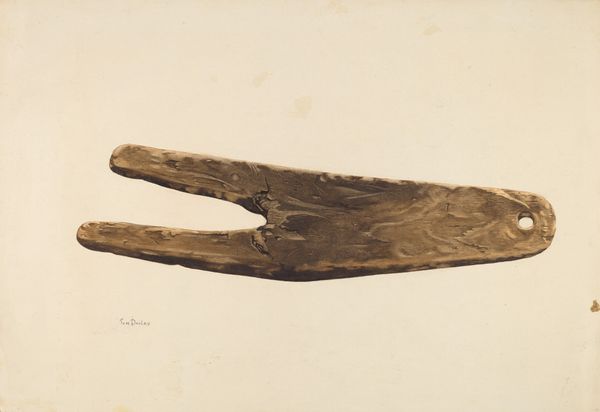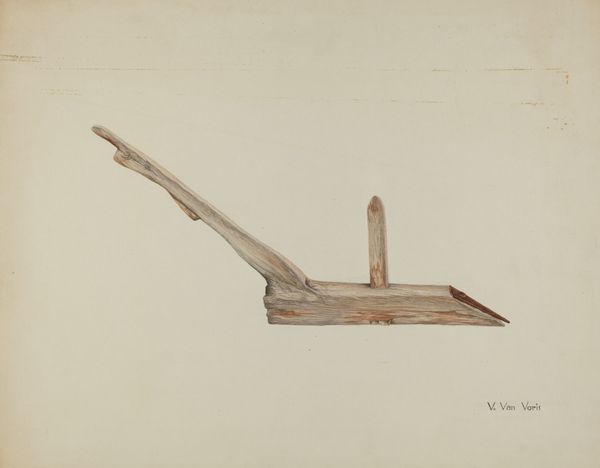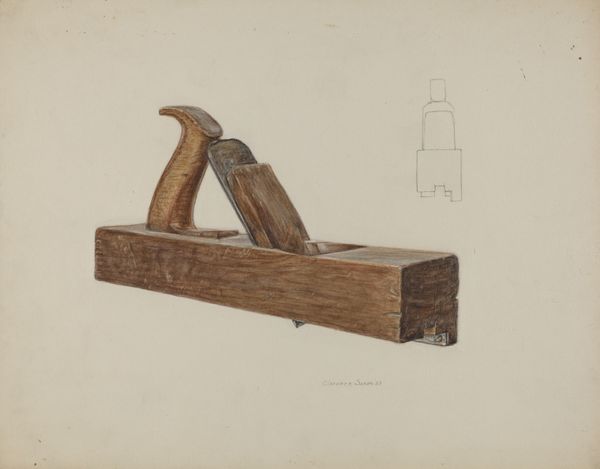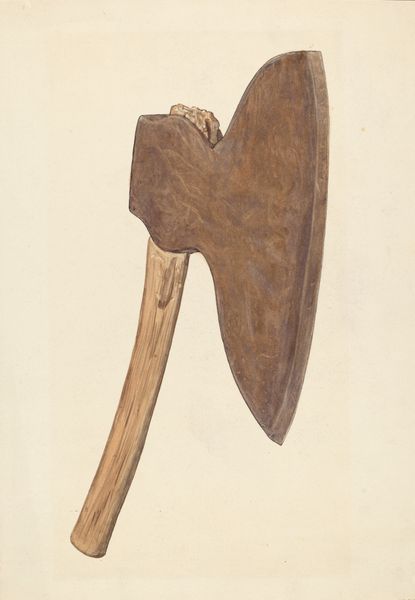
drawing, paper, watercolor, wood
#
drawing
#
charcoal drawing
#
paper
#
watercolor
#
wood
#
modernism
#
realism
Dimensions: overall: 27.9 x 22.5 cm (11 x 8 7/8 in.) Original IAD Object: 12" long; 4 3/4" wide at top; 7" wide at bottom
Copyright: National Gallery of Art: CC0 1.0
Editor: This is Albert Geuppert's "Boot Form" from 1938, created with drawing, paper, watercolor, and wood. I find the rough texture and almost primitive form intriguing. It feels very grounded, like a basic tool. What do you see in this piece? Curator: I see an artifact steeped in the socio-political realities of the late 1930s. While seemingly simple, the boot form can be interpreted as a symbol of labor, perhaps referencing the working class and the rise of industrialization. What might a simple object signify in an era marked by economic hardship and escalating global conflict? Editor: So, you're saying the boot form isn't just a literal representation? Curator: Precisely. The choice of wood and the apparent simplicity could be read as a deliberate commentary on the value of manual labor. It evokes ideas related to class, labor, and social identity during a period of significant social change and growing fascism in Europe. Can we also consider how this object subverts traditional art objects? Editor: That’s fascinating! It makes me think about the art created by marginalized communities during this same period. The material speaks of durability. I also notice it is displayed like sculpture. What considerations would explain the material? Curator: Excellent point. The material underscores both utilitarianism and a kind of enduring presence amid social turbulence. But doesn't this formal study also serve as commentary on artistic convention during this politically fraught moment in time? Editor: I never considered it in that light before, seeing it connected to labor movements and social classes, makes it very engaging. Thank you! Curator: It highlights how objects often hold stories, reflecting complex layers of history and social experience, and how it’s important for the viewer to draw those linkages in our contemporary world.
Comments
No comments
Be the first to comment and join the conversation on the ultimate creative platform.
